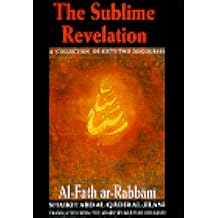
Some khanqahs include dwellings for the Sufi sheikh or pir, and his family, or cells for Sufis who wish to pursue their dhikr in quiet and isolation. Large khanqahs often grew up around the dargah of a tariqa's founder or of a Sufi saint.

The daily ritual prayers incumbent on all Muslims, salat, are held in this hall, as are the specifically Sufi forms of dhikr, meditation and celebration of the divine. Shrine of Islamic Naqshbandi saints of Allo Mahar SharifĪll khanqahs, regardless of size, feature a large central hall. In addition, there are lodges in Central and South Asia often referred to as Qalander Khane that serve as rest houses for the unaffiliated malang, dervishes and fakirs. In South Asia, the words khanqah and dargah are used interchangeably for Sufi shrines. In the former regions of the Ottoman Empire, they are locally referred to as tekke in Turkish (from Ottoman Turkish تکه, alternative form of تكیه tekye), teqeja in Albanian, tekija in Bosnian, and تكيّة takiyya in Arabic. In the Arab world, especially North Africa, the khanqah is known as a zāwiyah ( Arabic: زاوية, plural zāwiyāt also transliterated as zawiya, zāwiya or zaouia). Khanqahs are very often found adjoined to dargahs (shrines of Sufi saints) and türbes (tombs of notables), mosques and madrasas (Islamic schools).


In the past, and to a lesser extent nowadays, they often served as hospices for saliks (Sufi travelers), Murids (initiates) and talibs (Islamic students). A khanqah ( Persian: خانقاه) or khangah ( Persian: خانگاه also transliterated as khankah, khaneqa, khanegah or khaneqah also Arabized hanegah, hanikah, hanekah, khankan), also known as a ribat ( رباط) – among other terms – is a building designed specifically for gatherings of a Sufi brotherhood or tariqa and is a place for spiritual retreat and character reformation.


 0 kommentar(er)
0 kommentar(er)
